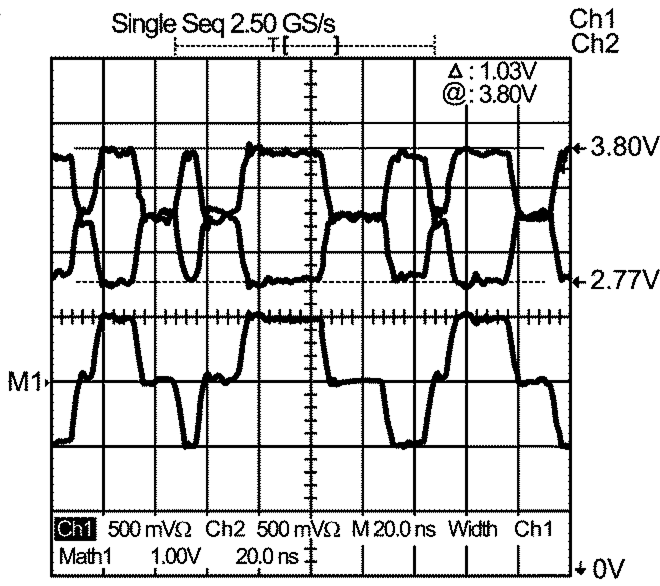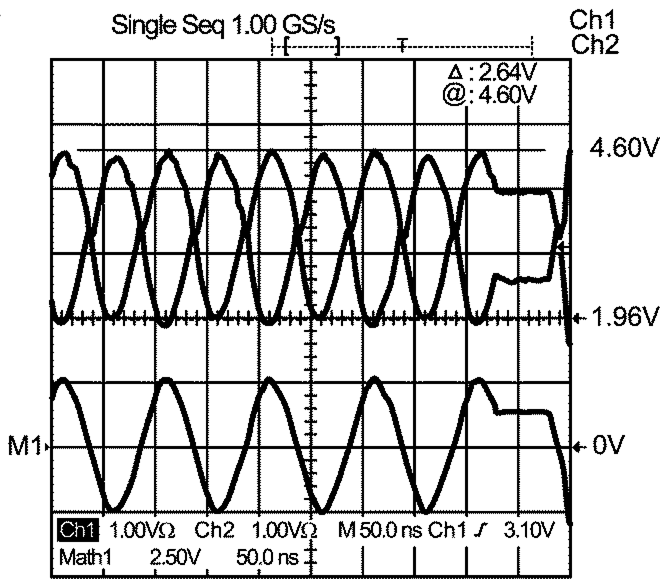SNOSAX1F May 2008 – September 2015 DP83849I
PRODUCTION DATA.
- 1 Device Overview
- 2 Revision History
- 3 Terminal Configuration and Functions
- 4 Specifications
-
5 Detailed Description
- 5.1 Overview
- 5.2 Functional Block Diagram
- 5.3 Feature Description
- 5.4 Device Functional Modes
- 5.5
Programming
- 5.5.1 Architecture
- 5.5.2 100BASE-TX Receiver
- 5.5.3
Analog Front End
- 5.5.3.1 Digital Signal Processor
- 5.5.3.2 Digital Adaptive Equalization and Gain Control
- 5.5.3.3 Signal Detect
- 5.5.3.4 MLT-3 to NRZI Decoder
- 5.5.3.5 NRZI to NRZ
- 5.5.3.6 Serial to Parallel
- 5.5.3.7 Descrambler
- 5.5.3.8 Code-Group Alignment
- 5.5.3.9 4B/5B Decoder
- 5.5.3.10 100BASE-TX Link Integrity Monitor
- 5.5.3.11 BAD SSD Detection
- 5.5.4
10BASE-T Transceiver Module
- 5.5.4.1 Operational Modes
- 5.5.4.2 Smart Squelch
- 5.5.4.3 Collision Detection and SQE
- 5.5.4.4 Carrier Sense
- 5.5.4.5 Normal Link Pulse Detection/Generation
- 5.5.4.6 Jabber Function
- 5.5.4.7 Automatic Link Polarity Detection and Correction
- 5.5.4.8 Transmit and Receive Filtering
- 5.5.4.9 Transmitter
- 5.5.4.10 Receiver
- 5.6
Register Block
- 5.6.1
Register Definition
- 5.6.1.1 Basic Mode Control Register (BMCR)
- 5.6.1.2 Basic Mode Status Register (BMSR)
- 5.6.1.3 PHY Identifier Register #1 (PHYIDR1)
- 5.6.1.4 PHY Identifier Register #2 (PHYIDR2)
- 5.6.1.5 Auto-Negotiation Advertisement Register (ANAR)
- 5.6.1.6 Auto-Negotiation Link Partner Ability Register (ANLPAR) (BASE Page)
- 5.6.1.7 Auto-Negotiation Link Partner Ability Register (ANLPAR) (Next Page)
- 5.6.1.8 Auto-Negotiate Expansion Register (ANER)
- 5.6.1.9 Auto-Negotiation Next Page Transmit Register (ANNPTR)
- 5.6.1.10 PHY Status Register (PHYSTS)
- 5.6.1.11 MII Interrupt Control Register (MICR)
- 5.6.1.12 MII Interrupt Status and Miscellaneous Control Register (MICR)
- 5.6.1.13 Page Select Register (PAGESEL)
- 5.6.2
Extended Registers - Page 0
- 5.6.2.1 False Carrier Sense Counter Register (FCSCR)
- 5.6.2.2 Receiver Error Counter Register (RECR)
- 5.6.2.3 100 Mb/s PCS Configuration and Status Register (PCSR)
- 5.6.2.4 RMII and Bypass Register (RBR)
- 5.6.2.5 LED Direct Control Register (LEDCR)
- 5.6.2.6 PHY Control Register (PHYCR)
- 5.6.2.7 10BASE-T Status/Control Register (10BTSCR)
- 5.6.2.8 CD Test and BIST Extensions Register (CDCTRL1)
- 5.6.2.9 Phy Control Register 2 (PHYCR2)
- 5.6.2.10 Energy Detect Control (EDCR)
- 5.6.3
Link Diagnostics Registers - Page 2
- 5.6.3.1 100Mb Length Detect Register (LEN100_DET), Page 2, address 14h
- 5.6.3.2 100Mb Frequency Offset Indication Register (FREQ100), Page 2, address 15h
- 5.6.3.3 TDR Control Register (TDR_CTRL), Page 2, address 16h
- 5.6.3.4 TDR Window Register (TDR_WIN), Page 2, address 17h
- 5.6.3.5 TDR Peak Register (TDR_PEAK), Page 2, address 18h
- 5.6.3.6 TDR Threshold Register (TDR_THR), Page 2, address 19h
- 5.6.3.7 Variance Control Register (VAR_CTRL), Page 2, address 1Ah
- 5.6.3.8 Variance Data Register (VAR_DATA), Page 2, address 1Bh
- 5.6.3.9 Link Quality Monitor Register (LQMR), Page 2, address 1Dh
- 5.6.3.10 Link Quality Data Register (LQDR), Page 2
- 5.6.1
Register Definition
- 6 Applications, Implementation, and Layout
- 7 Power Supply Recommendations
- 8 Layout
- 9 Device and Documentation Support
- 10Mechanical Packaging and Orderable Information
6 Applications, Implementation, and Layout
NOTE
Information in the following applications sections is not part of the TI component specification, and TI does not warrant its accuracy or completeness. TI’s customers are responsible for determining suitability of components for their purposes. Customers should validate and test their design implementation to confirm system functionality.
6.1 Application Information
The DP83849I is a dual port physical layer Ethernet transceiver. When using the device for Ethernet application, it is necessary to meet certain requirements for normal operation of the device. The following typical application and design requirements can be used for selecting appropriate component values for DP83849.
6.2 Typical Application

6.2.1 Design Requirements
For this design example, use the parameters listed in Table 6-1 as the input parameters.
Table 6-1 Design Parameters
| PARAMETER | EXAMPLE VALUE |
|---|---|
| VIN | 3.3 V |
| VOUT | VCC – 0.5 V |
| Clock Input | 25 MHz for MII and 50 MHz for RMII |
6.2.2 Detailed Design Procedure
6.2.2.1 TPI Network Circuit
Figure 6-1 shows the recommended circuit for a 10/100 Mb/s twisted pair interface.
Below is a partial list of recommended transformers. It is important that the user realize that variations with PCB and component characteristics requires that the application be tested to ensure that the circuit meets the requirements of the intended application.
- Pulse H1102
- Pulse H2019
- Belfuse S558-5999-U7
- Halo TG110-S050N2RL
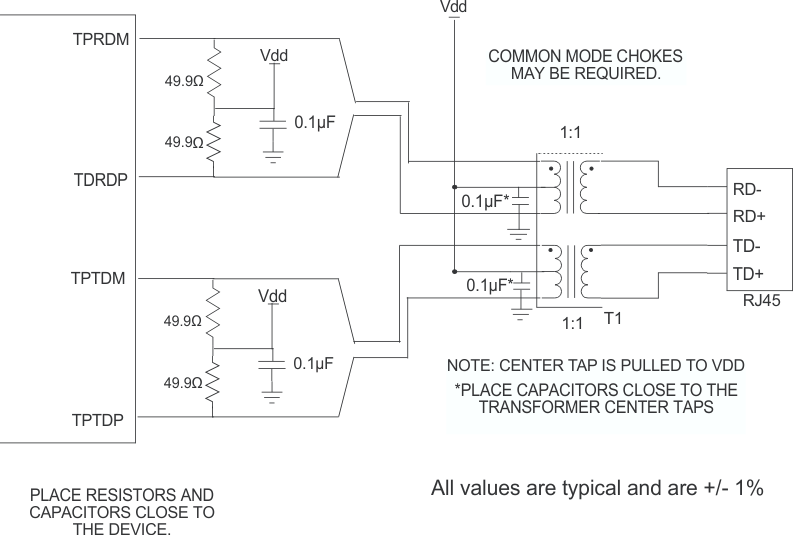 Figure 6-1 10/100 Mb/s Twisted Pair Interface
Figure 6-1 10/100 Mb/s Twisted Pair Interface
6.2.2.2 Clock In (X1) Requirements
The DP83849I supports an external CMOS level oscillator source or a crystal resonator device.
6.2.2.2.1 Oscillator
If an external clock source is used, X1 must be tied to the clock source and X2 must be left floating.
Specifications for CMOS oscillators: 25 MHz in MII Mode and 50 MHz in RMII Mode are listed in Table 6-2 and Table 6-3.
6.2.2.2.2 Crystal
A 25 MHz, parallel, 20-pF load crystal resonator must be used if a crystal source is desired. Figure 6-2 shows a typical connection for a crystal resonator circuit. The load capacitor values will vary with the crystal vendors; check with the vendor for the recommended loads. The oscillator circuit is designed to drive a parallel resonance AT cut crystal with a minimum drive level of 100 µW and a maximum of 500 µW. If a crystal is specified for a lower drive level, a current limiting resistor must be placed in series between X2 and the crystal.
As a starting point for evaluating an oscillator circuit, if the requirements for the crystal are not known, CL1 and CL2 must be set at 33 pF, and R1 must be set at 0 Ω.
Specification for 25-MHz crystal are listed in Table 6-4.
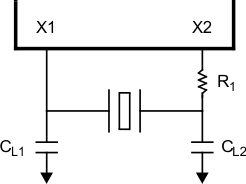 Figure 6-2 Crystal Oscillator Circuit
Figure 6-2 Crystal Oscillator Circuit
Table 6-2 25-MHz Oscillator Specification
| PARAMETER | TEST CONDITIONS | MIN | TYP | MAX | UNIT |
|---|---|---|---|---|---|
| Frequency | 25 | MHz | |||
| Frequency Tolerance | Operational Temperature | 50 | ppm | ||
| Frequency Stability | 1 year aging | 50 | ppm | ||
| Rise / Fall Time | 20%–80% | 6 | nsec | ||
| Jitter | Short term | 800(1) | psec | ||
| Jitter | Long term | 800(1) | psec | ||
| Symmetry | Duty Cycle | 40% | 60% |
Table 6-3 50-MHz Oscillator Specification
| PARAMETER | TEST CONDITIONS | MIN | TYP | MAX | UNIT |
|---|---|---|---|---|---|
| Frequency | 50 | MHz | |||
| Frequency Tolerance | Operational Temperature | ±50 | ppm | ||
| Frequency Stability | Operational Temperature | ±50 | ppm | ||
| Rise / Fall Time | 20%–80% | 6 | nsec | ||
| Jitter | Short term | 800(1) | psec | ||
| Jitter | Long term | 800(1) | psec | ||
| Symmetry | Duty Cycle | 40% | 60% |
Table 6-4 25-MHz Crystal Specification
| PARAMETER | CONDITION | MIN | TYP | MAX | UNIT |
|---|---|---|---|---|---|
| Frequency | 25 | MHz | |||
| Frequency Tolerance | Operational Temperature | ±50 | ppm | ||
| Frequency Stability | 1 year aging | ±50 | ppm | ||
| Load Capacitance | 25 | 40 | pF |
6.2.3 Power Feedback Circuit
To ensure correct operation for the DP83849I, parallel caps with values of 10 µF and 0.1 µF must be placed close to pin 31 (PFBOUT) of the device. Pin 7 (PFBIN1), pin 28 (PFBIN2), pin 34 (PFBIN3) and pin 54 (PFBIN4) must be connected to pin 31 (PFBOUT), each pin requires a small capacitor (0.1 µF). See Figure 6-3 for proper connections.
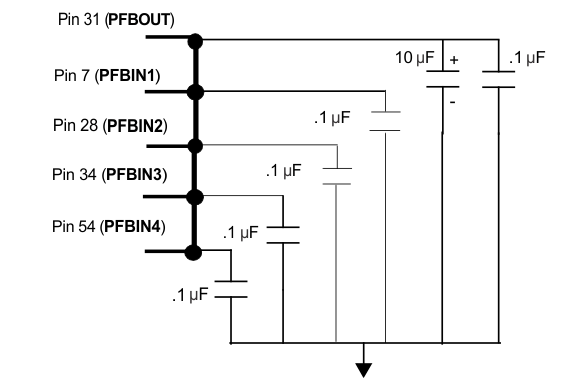 Figure 6-3 Power Feedback Connections
Figure 6-3 Power Feedback Connections
6.2.4 Power Down/Interrupt
The Power Down and Interrupt functions are multiplexed on pin 18 and pin 44 of the device. By default, this pin functions as a power down input and the interrupt function is disabled. Setting bit 0 (INT_OE) of MICR (11h) will configure the pin as an active low interrupt output. Ports A and B can be powered down individually, using the separate PWRDOWN_INT_A and PWRDOWN_INT_B pins.
6.2.4.1 Power Down Control Mode
The PWRDOWN_INT pins can be asserted low to put the device in a Power Down mode. This is equivalent to setting bit 11 (Power Down) in the Basic Mode Control Register, BMCR (00h). An external control signal can be used to drive the pin low, overcoming the weak internal pullup resistor. Alternatively, the device can be configured to initialize into a Power Down state by use of an external pulldown resistor on the PWRDOWN_INT pin. Because the device will still respond to management register accesses, setting the INT_OE bit in the MICR register will disable the PWRDOWN_INT input, allowing the device to exit the Power Down state
6.2.4.2 Interrupt Mechanisms
Because each port has a separate interrupt pin, the interrupts can be connected individually or may be combined in a wired-OR fashion. If the interrupts share a single connection, each port status must be checked following an interrupt.
The interrupt function is controlled through register access. All interrupt sources are disabled by default. Setting bit 1 (INTEN) of MICR (11h) will enable interrupts to be output, dependent on the interrupt mask set in the lower byte of the MISR (12h). The PWRDOWN_INT pin is asynchronously asserted low when an interrupt condition occurs. The source of the interrupt can be determined by reading the upper byte of the MISR. One or more bits in the MISR will be set, denoting all currently pending interrupts. Reading of the MISR clears ALL pending interrupts.
Example: To generate an interrupt on a change of link status or on a change of energy detect power state, the steps would be:
- Write 0003h to MICR to set INTEN and INT_OE
- Write 0060h to MISR to set ED_INT_EN and LINK_INT_EN
- Monitor PWRDOWN_INT pin
When PWRDOWN_INT pin asserts low, the user would read the MISR register to see if the ED_INT or LINK_INT bits are set; that is, which source caused the interrupt. After reading the MISR, the interrupt bits must clear and the PWRDOWN_INT pin will deassert.
6.2.5 Application Curves
